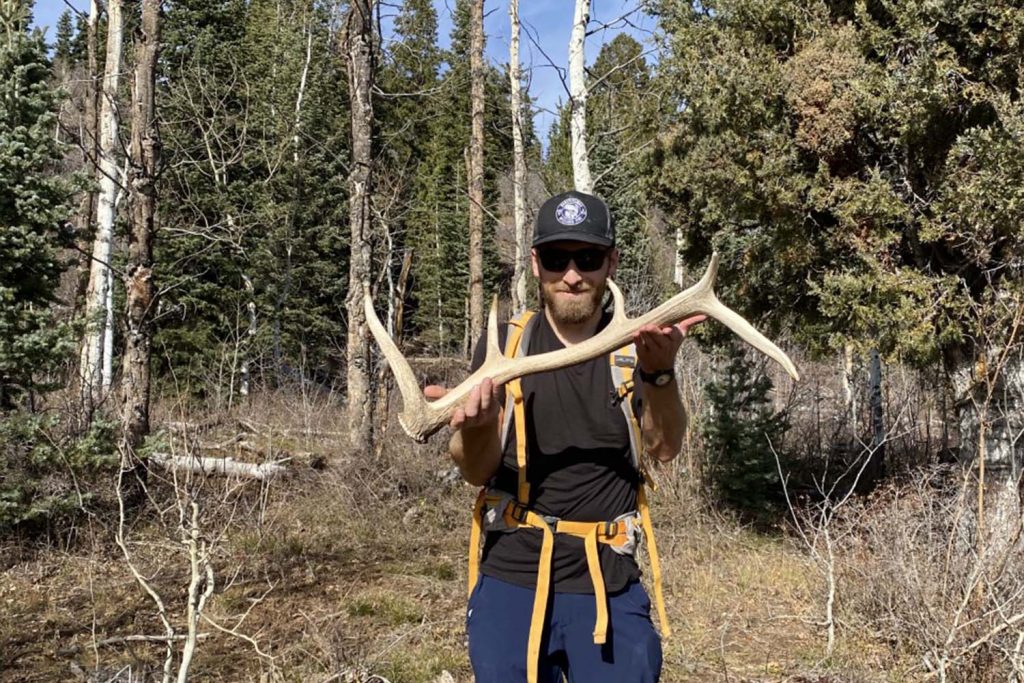Restoring Utah’s Watersheds through Innovation and Collaboration
“The relationship between forests and rivers is like father and son. No father, no son.’” – Gifford Pinchot
The NWTF has been a proud partner of the Utah Watershed Restoration Initiative since the creation of the multi-partner initiative in 2006. The Watershed Restoration Initiative is a partnership-based program, administered by the state of Utah, that aims to improve high-priority watersheds throughout the state. Projects accomplished through the initiative create healthier watersheds and promote biological diversity, clean and abundant water, recreational opportunities and enhance wild turkey habitat. In 2021 alone, the NWTF contributed $121,870 among 55 ongoing projects that will both improve watershed health, forest health and create viable habitat for wild turkeys and numerous other wildlife.
“Simply put, watersheds are land areas through which water travels, be it through the soil, floodplains, rivers, creeks or streams,” said Chuck Carpenter, NWTF district biologist for Utah, Colorado, New Mexico and Arizona. “Much of this water originates from, or is filtered through, a forested area, and if the forests are not healthy, then water quality or availability will not be ideal.”
Like many areas in the West, forests in Utah that have received little to no management have become unhealthy monocultures (one single tree species) of trees that are all in the same age class, which increases their risk of catastrophic wildfire, insect infestation and disease. The previous lack of management also exacerbates climate events, such as erosion and flooding. All of these events lead to reduced value for wildlife.
“Working through the Watershed Restoration Initiative really sets us up for a win-win situation,” Carpenter said. “When we collaborate with many partners, all with various interests, we are able to leverage funds and make a landscape-scale impact that benefits all the groups involved.”
The conservation work accomplished through the Watershed Restoration Initiative helps conserve wild turkeys in Utah, and the work also bolsters the NWTF’s Four Shared Values, which are Clean Water, Healthy Forests and Wildlife Habitat, Resilient Communities and Robust Recreational Opportunities. The ongoing Upper Provo Watershed Project is emblematic of all the great work being accomplished throughout Utah.
Occurring in the Uinta-Wasatch-Cache National Forest, the fifth phase of the Upper Provo project just concluded, treating a total of 1,747 acres, which included 665 acres of small tree brush grinding, 790 acres of small tree thinning and 292 acres of forest opening.

Phase six of the Upper Provo Watershed project is set to begin in 2022 and conclude in 2023, and could impact up to 2,716 acres in the national forest. The Upper Provo is one of the 55 ongoing projects the NWTF is currently helping fund in Utah that are working to:
- Improve wildlife habitat.
- Increase forest resilience.
- Enhance riparian areas.
- Improve water quality.
- Regenerate and restore aspen.
- Increase early successional vegetation.
- Restore upland habitat.
- Reduce hazardous fuel loads.
- Reduce fire risk to critical infrastructure.
- Restore and improve the health of the watershed.
- Protect crucial fish habitat.
- Improve soil conditions.
- Reduce sedimentation into multiple watersheds.
“These projects also directly benefit wild turkeys by stimulating growth of the understory and diversifying the age-class of the forest, creating early successional vegetation that is necessary for brooding and insect production,” Carpenter said. “Multiple projects in riparian areas help create critical roosting areas, brooding areas and migration corridors. The reduction of invasive species, such as tamarisk and Russian olive, increases the line of sight for turkeys, which makes them feel more comfortable and has led to an increase in usage of these areas by turkeys.”
To date, the Utah Watershed Initiative has completed 2,460 projects, impacting 2,226,828 acres across the state.
Additional partners include the USDA Forest Service, USDA Natural Resources Conservation Service, Bureau of Land Management, Utah Division of Wildlife Resources, Trout Unlimited, Rocky Mountain Elk Foundation, Mule Deer Foundation and others.
“The breadth of all the benefits of the work we accomplish through the Watershed Restoration Initiative is why so many different partners are involved and ultimately why the program is such a success,” Carpenter said.
To learn more about the Utah Watershed Restoration Initiative, visit https://wri.utah.gov/wri/.
